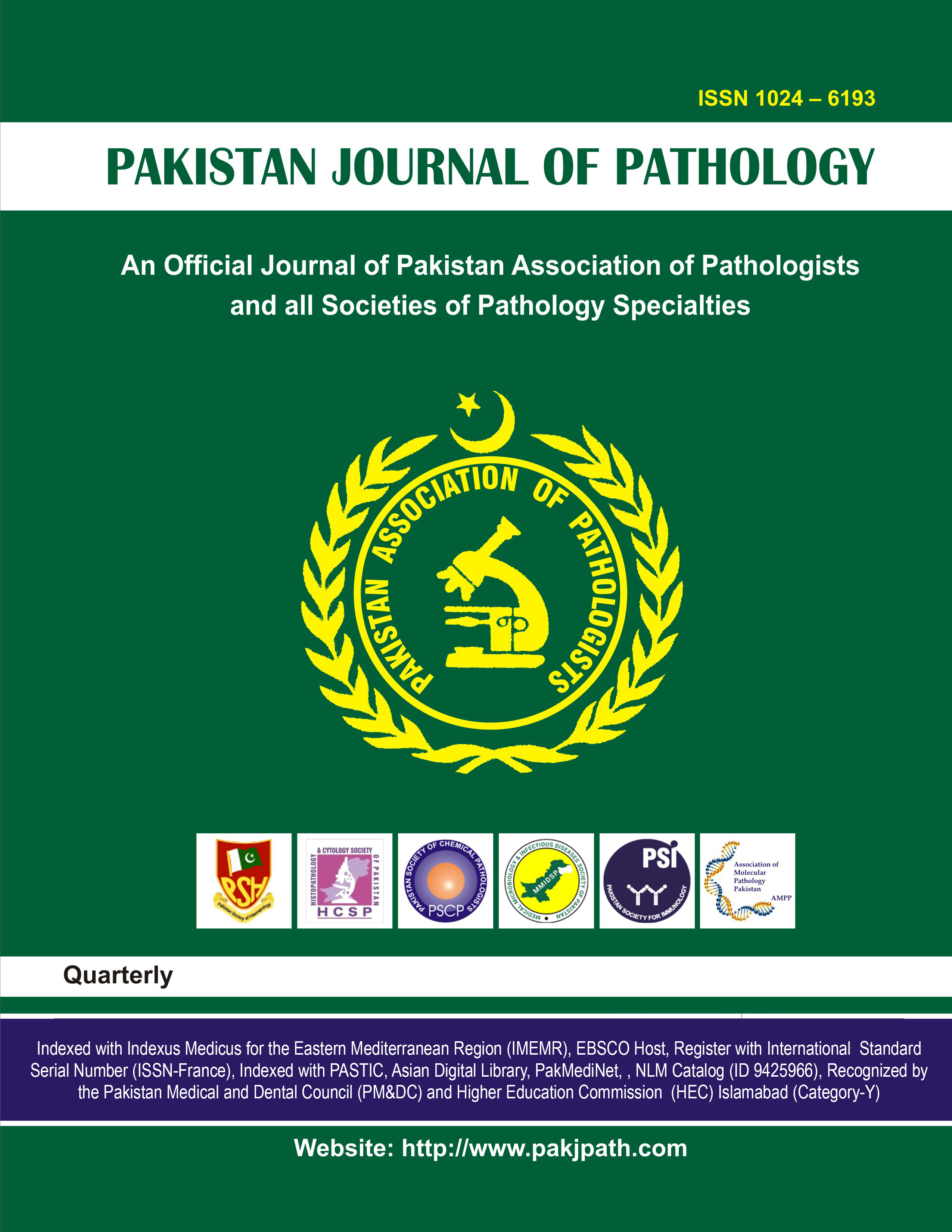About the Journal
Pakistan Journal of Pathology is and official journal of Pakistan Association of Pathologists. The journal is presently being published quarterly. The articles may include, original research, review articles, case reports, retrospective analysis of data, and new experimental methods of medical importance. The Pakistan Journal of PAthology follows "CC BY NC creative commons" licensing https://creativecommons.


